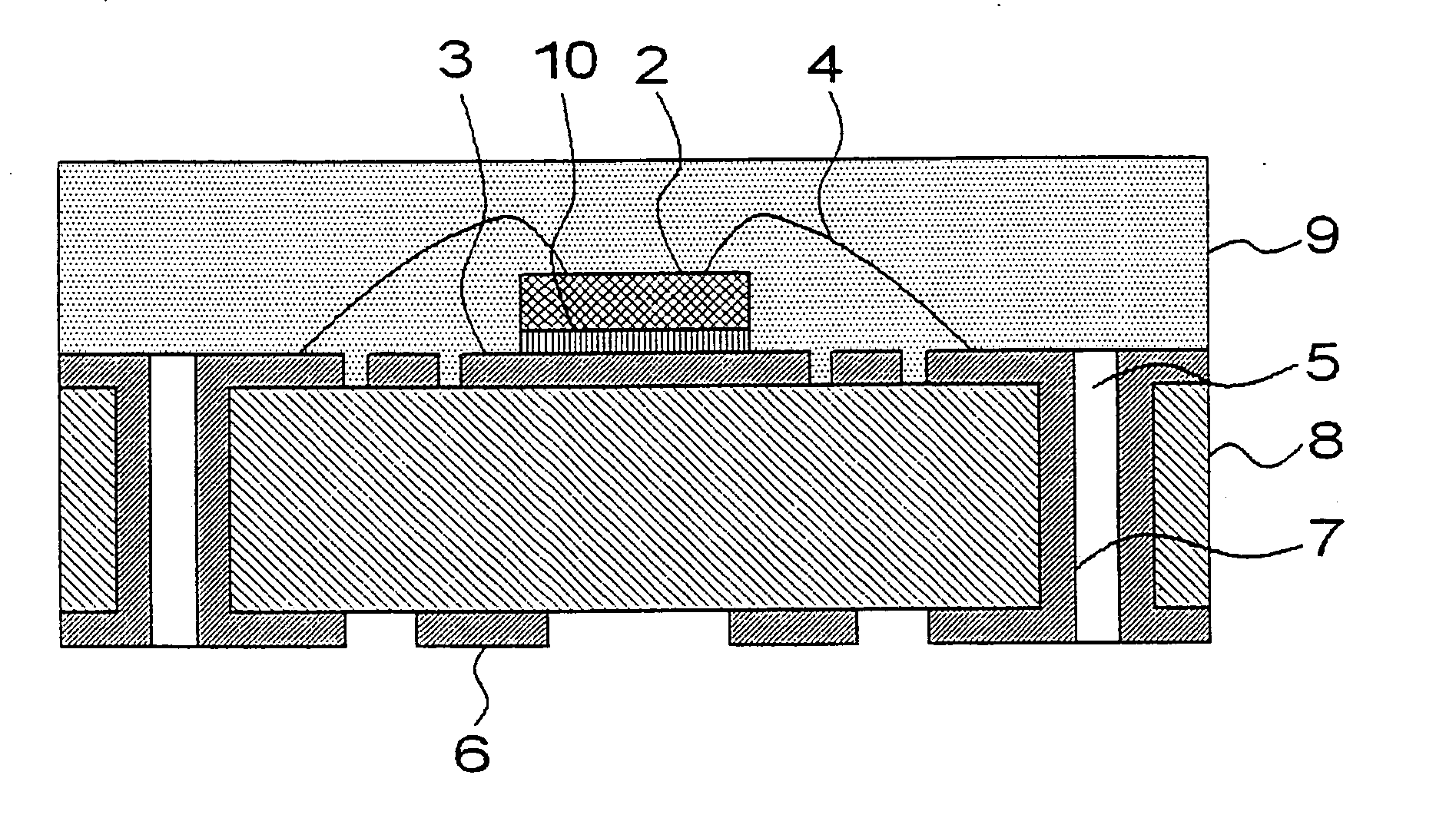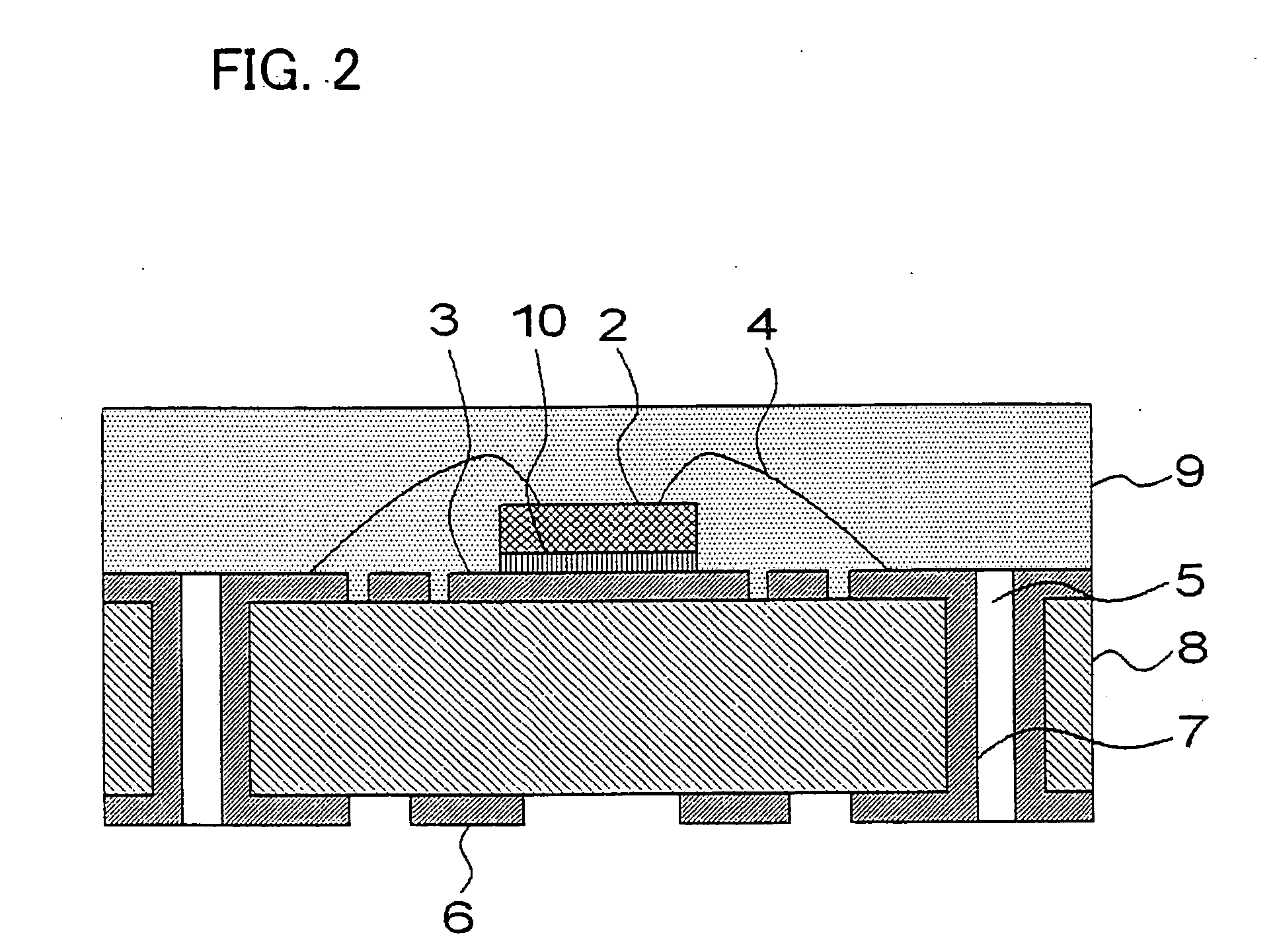Semiconductor device
a technology of semiconductor devices and semiconductors, applied in semiconductor devices, semiconductor/solid-state device details, electrical apparatus, etc., can solve the problems of lowering moisture resistance, raising equipment costs and manufacturing costs, and achieve high toughness, high efficiency, and high efficiency.
- Summary
- Abstract
- Description
- Claims
- Application Information
AI Technical Summary
Benefits of technology
Problems solved by technology
Method used
Image
Examples
example
[0032] Samples of the semiconductor devices 1, having different distances d between neighboring conductor patterns of 0.075 mm, 0.10 mm, 0.15 mm, 0.20 mm, 0.25 mm, 0.30 mm, 0.35 mm and 0.375 mm, as shown in FIG. 5, were prepared and checked as to occurrence of cracking at the time of resin encapsulation in each sample of the semiconductor devices 1. The conductor patters are designed to arrange a central square pattern, corner dummy patterns 3a of elongated squares, two squares (each with a through-hole) on upper side and lower side of the figure, respectively, and three elongated patterns (each with a though-hole) on left side and right side, respectively. On a resin substrate 8 of glass epoxy, 110 μm thick, conductor patterns 3, 6, formed of copper, nickel and gold layers, were formed, and a semiconductor element 2 was mounted on an upper conductor patterns 3 (i.e., on the central pattern), using an adhesive 10, containing silver powders. The conductor patterns 3, 6 were formed of...
PUM
 Login to View More
Login to View More Abstract
Description
Claims
Application Information
 Login to View More
Login to View More - R&D
- Intellectual Property
- Life Sciences
- Materials
- Tech Scout
- Unparalleled Data Quality
- Higher Quality Content
- 60% Fewer Hallucinations
Browse by: Latest US Patents, China's latest patents, Technical Efficacy Thesaurus, Application Domain, Technology Topic, Popular Technical Reports.
© 2025 PatSnap. All rights reserved.Legal|Privacy policy|Modern Slavery Act Transparency Statement|Sitemap|About US| Contact US: help@patsnap.com



